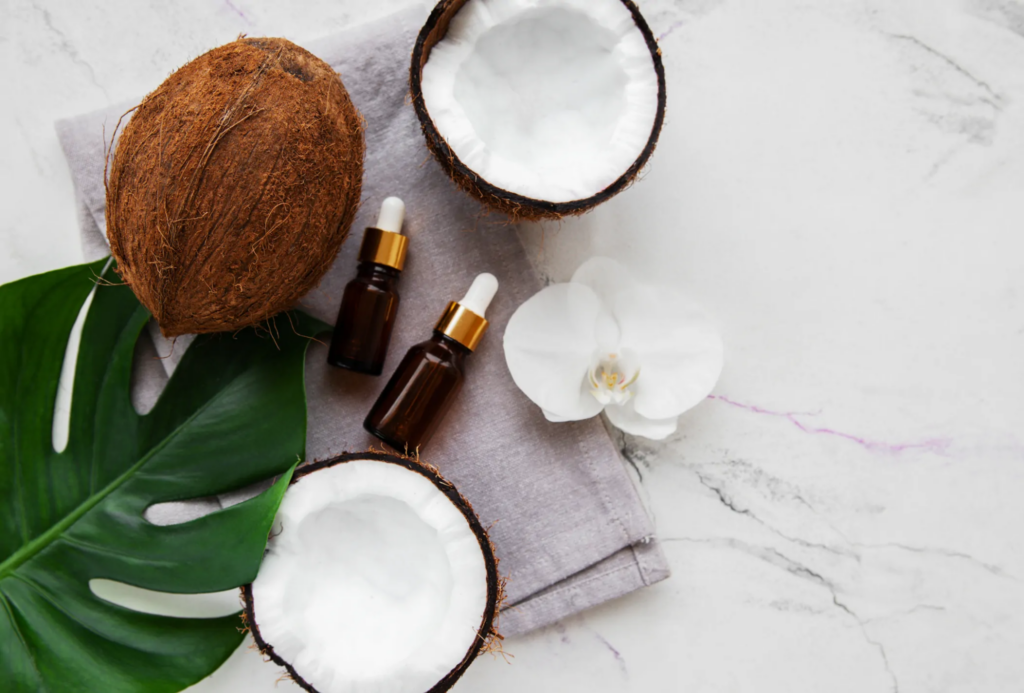The beauty and skincare industry is teeming with an array of ingredients, each serving a unique purpose. Amongst these is cocoglycerides, a natural ingredient derived from coconut oil, known for its emollient properties. As consumers become increasingly conscious about the products they introduce to their skin, understanding cocoglycerides is essential. This ingredient is essentially a mixture of mono, di, and triglycerides obtained from coconut oil, and it’s these properties that make it a hydrating and conditioning agent for a variety of cosmetic products. In this article, we’ll delve deeper into what cocoglycerides are, their benefits, uses, potential drawbacks, and their role in the cosmetic industry.
The Science Behind Cocoglycerides
Cocoglycerides are created through the process of esterification, which involves combining coconut oil with glycerin. This results in a light, non-greasy oil that is easily absorbed by the skin. Its structural similarity to natural lipids found in the skin enables it to reinforce the skin’s natural barrier while providing a smooth, silky texture to products. Rich in fatty acids, cocoglycerides are beneficial for hydrating the skin and maintaining its elasticity. The popularity of cocoglycerides in the cosmetic industry is due to this versatility and compatibility with a range of skin types.
Benefits of Cocoglycerides in Skincare
When it comes to the benefits of cocoglycerides, the list is impressively long. This multifaceted ingredient not only serves as an emollient but also doubles as a stabilizer in emulsions. Here’s a breakdown of its key advantages:
- Moisturization: Cocoglycerides help to keep the skin hydrated by preventing moisture loss, making it ideal for creams and lotions.
- Improved Product Texture: They impart a light and silky feel to skincare products, improving user experience.
- Compatibility: Suitable for most skin types, cocoglycerides do not typically irritate the skin, making them a go-to for formulations aimed at sensitive skin.
- Stability: They enhance the shelf-life of products by stabilizing the emulsion, thereby preventing the separation of oils and waters.
- Enhanced Absorption: Cocoglycerides can aid in the delivery of other beneficial ingredients deeper into the skin, thanks to their permeability.
Common Uses in the Industry
Cocoglycerides have secured a foothold across multiple product categories within the personal care and beauty sectors:
- Moisturizers and lotions for the face and body
- Cleansers and makeup removers
- Makeup foundations and concealers
- Lip balms and lipsticks
- Sunscreens and after-sun products
Their emulsifying properties make cocoglycerides a staple for crafting smooth and consistent creams and serums, while the ingredient’s natural origin appeals to brands and consumers alike.

Considerations and Potential Drawbacks
With all the positives attributed to cocoglycerides, it’s important to also be aware of any possible concerns. Some individuals might exhibit sensitivity to coconut-derived ingredients, necessitating a patch test before widespread use. Sustainability can be another consideration; as the demand for coconut oil grows, it’s crucial to ensure that sourcing remains responsible and does not lead to environmental degradation. Finally, while cocoglycerides are generally considered safe, quality control is essential to avoid contaminants that can arise during the manufacturing process.
The Role in Today’s Cosmetic Industry
Cocoglycerides represent a shift in the cosmetic industry towards ingredients that are not only effective but also derived from renewable resources. The versatility and mildness of cocoglycerides mean they can be used in products marketed to all ages and skin types, contributing to their widespread adoption. Moreover, as the industry moves towards transparency, the clear labeling and recognizability of cocoglycerides as a coconut-derived substance add to their appeal for conscious consumers.
Conclusion
In conclusion, cocoglycerides are an invaluable addition to the cosmetic and personal care industries, offering multiple benefits from moisturization to product stabilization. Their natural origin and skin compatibility make them ideal for a wide range of products, promoting healthy skin environments and enhancing the overall quality of formulations. Their presence reflects the industry’s ongoing commitment to balance efficacy with natural and sustainable ingredient choices. As with any ingredient, however, it’s crucial for consumers and formulators alike to be aware of sourcing practices and potential sensitivities.
FAQs
- What are cocoglycerides? Cocoglycerides are emollient compounds made from a mixture of glycerin and coconut oil fatty acids, widely used in the cosmetic industry for their moisturizing and texturizing properties.
- Are cocoglycerides safe for all skin types? Generally, cocoglycerides are well-tolerated by most skin types, but individuals with a sensitivity to coconut oil should perform a patch test prior to use.
- Why are cocoglycerides used in cosmetics? Cocoglycerides are used because of their emollient properties, ability to stabilize products, enhance texture, and compatibility with a wide range of skin types.
- Are cocoglycerides vegan and cruelty-free? Being derived from coconut oil, cocoglycerides are vegan. However, consumers should check individual products for cruelty-free certification as it pertains to animal testing practices.
- Can cocoglycerides benefit oily skin? Yes, due to their light texture and non-greasy feel, cocoglycerides can be beneficial for oily skin by providing hydration without clogging pores or leading to excess shine.


